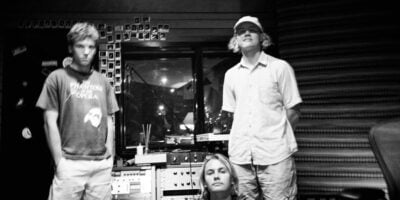After standing just off to the side in the shadows amongst some of the world’s biggest and most respected producer talents, London-based artist Jon Hopkins experienced a worldwide burst of exposure with the release this year of his breathtaking solo album Immunity. Speaking from “East London, under the gray skies of England,” Hopkins recounts the lead-up to Immunity’s facilitation of his rise to electronic stardom.
“It’s been a really gradual gradient. Admittedly, it’s really picked up a lot this year,” he says. “In particular, in the UK a couple years ago, I got a lot of attention for an album I did with King Creosote. Not quite the same way as this – it was more of a chilled affair. [I wasn’t] really doing the big club shows like I’m doing now, but it was a good preparation. I’m reasonably equipped to deal with the amount of activity this year.”
As for why Immunity provided such a significant breakthrough as opposed to his three previous albums, Hopkins is philosophical. “Personally, I’m older and more knowledgeable about what I’m good at and what I’m not good at. I think with this album, I gave it the best chance possible by clearing out an amount of time to work on it. In the past I was doing so many projects at the same time, so I was never able to focus on my own material for more than a few weeks at a time. [On] the other albums you can hear my stylistic interests changing throughout, where it’s not really one coherent work. This one I did in nine months – in one go, pretty much – and the result is that you can hear one train of thought. It’s simple as that.”
After working alongside Brian Eno, Coldplay and the aforementioned King Creosote, Hopkins still cherishes the prospect of working with other talent – including recent tracks with Purity Ring and Bat For Lashes. “It’s a lot easier, collaborating. I find it inspiring to have a vocalist there. If someone’s there in the studio, the song can take three or four days. But if I’m working solo it can take up to six weeks. The highs of writing a solo track are great, there’s a euphoria that comes with it. But you have to work hard for it. There are ups and downs, really.”
The end of 2013 will see Hopkins bring Australia his live show, an outlet that has come into its own around the release of the new record. “It’s funny. In the last six months of touring, I’ve realised more than anything how much I respond to the audience. If they’re having a good time and they’re into it and feeling it, they give all of that back and I’ll play better. Luckily, for the most part the crowds have been brilliant so far. But you get these shows with a bit less energy, then it feels less creative. Even if you’re evolving your tracks onstage, it’s still not new music. I needed to get out of the studio and have a break from writing new music, so it was a perfect change.”
The live setting is one with a few contradictions to overcome for electronic-based artists, with fans craving both familiarity while simultaneously wanting something revelatory – something more than they can experience by streaming a Boiler Room set from the comfort of their home. It’s a challenge that Hopkins deftly navigates. “I like to focus on what I consider the highlights of the album, then I will deviate a little bit, maybe show the crowd something I am working on now, or something like a live-only track. It focuses very much on the rhythmic side of things; I’m not currently addressing the more downtempo side of the album because the shows are in clubs. It’s been getting more intense.”
BY LACHLAN KANONIUK
Jon Hopkins plays Oxford Art Factory on Saturday December 14.Immunityout now through Domino.

































